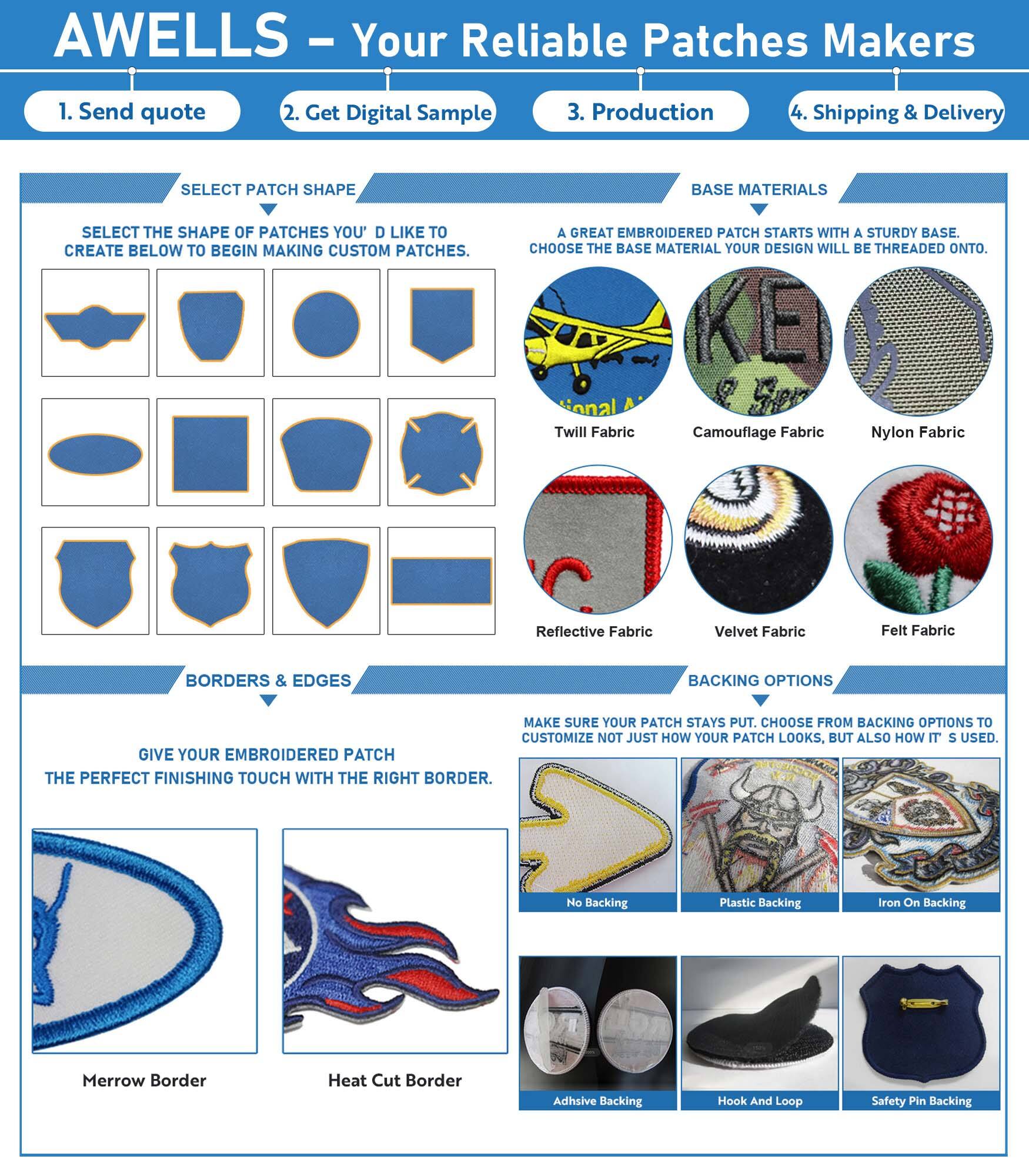Los parches personalizados ahora se pueden usar fácilmente en ropa o accesorios porque han combinado estilo con un uso sencillo. En esta guía exploraremos materiales seleccionados y estilos de diseño que ayudan a cumplir mejor con los requisitos de los parches bordados.
Comprender los Materiales Utilizados para la Fabricación de Parches
El material utilizado para parches cosidos afecta la calidad y la resistencia de un parche. Hay muchas opciones de materiales, como twill, lienzo y fieltro. El twill es un tejido duradero que tiene una superficie lisa, lo que hace que el bordado sea claro e ideal para patrones intrincados. El fieltro tiene una textura mucho más ligera que el twill, lo que lo hace mejor para parches casuales. El lienzo es un material más suave y natural, por lo tanto, es un tejido preferido para hacer ropa o chaquetas para exteriores.
Estilos de Parches con Bordado
Hay muchos tipos y estilos diferentes de parches bordados basados en el aspecto. Los principales para parches de costura incluyen:
-
Parches de Entretela: Los parches con adhesivo activado por calor se conocen como parches de entretela, por lo que requieren un esfuerzo mínimo o simplemente una plancha para su fijación. Por lo tanto, pueden usarse para personalización o reparación fácil de desgarros.
-
Parches para coser : Pueden ser permanentemente adheridos al tejido mediante costura. A menudo son más resistentes que los parches de planchar y son óptimos para artículos que sufren un uso intensivo, como uniformes de trabajo o ropa de exterior.
-
Parches de Velcro: Estos parches pueden colocarse y quitarse de manera económica porque tienen ganchos y bucles adheridos a sus respaldos. Estos parches se utilizaron principalmente en equipo táctico y militar debido a la necesidad de cambiar los parches regularmente.
-
parches 3D: Estos parches llevan una marca con bordado en relieve, lo que les da un aspecto tridimensional. A menudo se utilizan en branding y artículos publicitarios porque los diseños intrincados ayudan a captar la atención de las personas.
Seleccionando el Estilo de Parche para Tus Requisitos
Piensa en cómo se utilizará el parche bordado y en el tejido destinado. Para situaciones informales, un parche de planchar es adecuado. Sin embargo, para situaciones más exigentes, un parche de coser es mejor. Además, considera el diseño que deseas representar y que mejor simbolice tu marca o estilo personal. La elección de personalización como tamaño, forma y color del hilo puede mejorar dramáticamente la belleza de estos parches.
Cuidado de Tus Parches Bordados Personalizados
El cuidado adecuado es importante para asegurar que tus parches bordados personalizados duren mucho tiempo. Para los parches de planchado, se debe evitar el calor excesivo al lavar y secar para que el adhesivo no se derrita. Los parches cosidos pueden soportar lavados más rigurosos, aunque aún es mejor lavarlos del revés para proteger el bordado. Revisar regularmente los hilos puede ayudar a mantener el aspecto y la funcionalidad de tus parches.
Tendencias en la Industria y los Caminos del Mañana
La industria de parches bordados está haciendo cambios hacia recursos más sostenibles y amigables con el medio ambiente, así como técnicas de producción. Con algunos consumidores siendo más conscientes de cómo se fabrican sus parches, muchas marcas están recurriendo a telas orgánicas e tintas a base de agua. La aparición de la tecnología de bordado digital también atiende el aumento de la demanda de ropa personalizada, permitiendo diseños más detallados y tiempos de entrega más rápidos.
Como se ha dicho, los parches bordados son una excelente manera de representarte a ti mismo y adornar aún más tu ropa. Apoyándose en la moda, el branding y la expresión personalizada, muchas personas han recurrido al uso de elegantes parches bordados que son prácticos y útiles de una manera notable.

